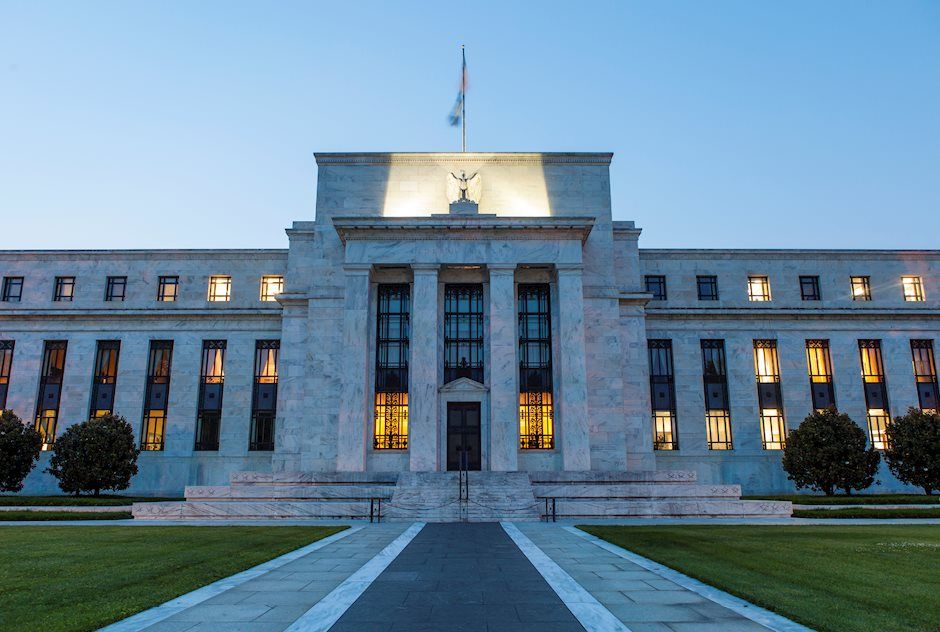Fed's Goolsbee: Rates should go down if conditions are stable and there is no uptick in inflation

In an interview with CNBC on Friday, Federal Reserve (Fed) Bank of Chicago President Austan Goolsbee said if conditions are stable and there is no uptick in inflation, with full employment, rates should go down, per Reuters.
Key takeaways
"Will never complain about 250,000 jobs."
"Still should not over-index on individual job reports."
"Will have to process if retail gains were a strong holiday season or something more general."
"I do not see job market as a source of inflation."
"Current wage growth consistent with 2% inflation given productivity."
"Job market seems stable at full employment."
"Rise in long rates not explained by expected inflation."
"Some component of rise in long rates is from higher than expected growth, and expected slower pace of fed cuts."
"Inflation rate over the last six months was 1.9%."
"12 to 18 months from now rates would be a fair bit lower if current expectations are met."
"Fed does have to think about issues like tariffs, and other nations' responses, that impact prices."
"Issue would be determining if tariffs are a one time shock to prices or a persistent one."
"Once there are concrete proposals, the Fed will have to think about how they impact dual mandate goals."
"The current high annual inflation number is largely reflecting the uptick of early last year; wrong to say there has not been recent progress."
"The reason inflation looks sticky now is because of the jump a year ago."
"Interest sensitive parts of the economy do show the impact of Fed restraint, even if that is offset by things like business confidence."
"So far, I do not see evidence of overheating in recent months."
"It would be a concern if long rates started rising on the basis of inflation expectations."
Fed FAQs
Monetary policy in the US is shaped by the Federal Reserve (Fed). The Fed has two mandates: to achieve price stability and foster full employment. Its primary tool to achieve these goals is by adjusting interest rates. When prices are rising too quickly and inflation is above the Fed’s 2% target, it raises interest rates, increasing borrowing costs throughout the economy. This results in a stronger US Dollar (USD) as it makes the US a more attractive place for international investors to park their money. When inflation falls below 2% or the Unemployment Rate is too high, the Fed may lower interest rates to encourage borrowing, which weighs on the Greenback.
The Federal Reserve (Fed) holds eight policy meetings a year, where the Federal Open Market Committee (FOMC) assesses economic conditions and makes monetary policy decisions. The FOMC is attended by twelve Fed officials – the seven members of the Board of Governors, the president of the Federal Reserve Bank of New York, and four of the remaining eleven regional Reserve Bank presidents, who serve one-year terms on a rotating basis.
In extreme situations, the Federal Reserve may resort to a policy named Quantitative Easing (QE). QE is the process by which the Fed substantially increases the flow of credit in a stuck financial system. It is a non-standard policy measure used during crises or when inflation is extremely low. It was the Fed’s weapon of choice during the Great Financial Crisis in 2008. It involves the Fed printing more Dollars and using them to buy high grade bonds from financial institutions. QE usually weakens the US Dollar.
Quantitative tightening (QT) is the reverse process of QE, whereby the Federal Reserve stops buying bonds from financial institutions and does not reinvest the principal from the bonds it holds maturing, to purchase new bonds. It is usually positive for the value of the US Dollar.
Author

Eren Sengezer
FXStreet
As an economist at heart, Eren Sengezer specializes in the assessment of the short-term and long-term impacts of macroeconomic data, central bank policies and political developments on financial assets.
















